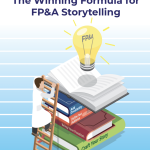In this video, Ivan Mitringa, Worldwide CFO Displays, Software & Client Peripherals at Dell, explains...
Data storytelling is one of the most critical skills for FP&A. It brings data to life, transforming it into accessible, effective visualisations and building narratives that explain it so that decisions can be influenced and strategic action can be inspired.
Data Story Levers
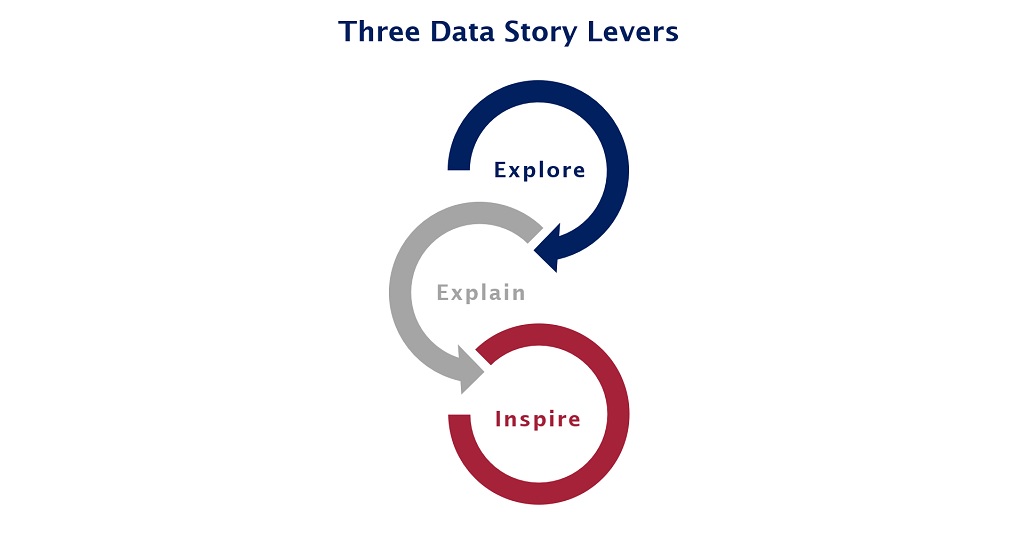
Figure 1
FP&A can leverage their data stories through the following three steps:
- Explore: Understand the relationships between variables, identify outliers and patterns, and analyse business problems and opportunities.
- Explain: Structure the data in an effective visual format and add context to make it meaningful and actionable for decision-makers.
- Inspire: Tell an impactful story that inspires actions.
How to Build an Impactful Data Story?
-
Integrate data, context, visuals and narrative
Data alone makes presentations boring and not engaging. Add context to make data meaningful. Create data visualisations in order to help the audience understand the numbers. Use clear and simple visuals that everyone is familiar with instead of complex and fancy charts. Data should also have a narrative around it to explain the meaning behind the numbers, engage the audience and make the message both sticky and memorable.

Figure 2
-
Add context
Data is meaningless without context. To impact stakeholders, FP&A need to add context to their story through comparative numbers, for example, benchmarks, competitor analysis, prior period figures and trends. To add powerful and effective context to data stories, FP&A need to find the answers to several questions:
- Who is your audience?
- What do you want them to know or to do?
- What bias does the audience have?
- What questions do you expect from them?
- What message do you want to deliver?
- How will you communicate to your audience?
By answering these questions, FP&A will be able to add the proper context with an appropriately tailored tone, language, and level of detail.
-
Use effective visuals
Humans process visuals 60,000 times faster than text. People can retain visual information at a rate more than 3 times higher than the rate at which they can retain text alone. Our brains see words as pictures, not individual letters. As a trusted business advisor, FP&A need to turn data (numbers and words) into visual elements such as charts, graphs and maps. It would substantially improve the quality of communication between FP&A and stakeholders. Six types of visuals can foster this communication.
1. Text
Simple text can be the best way to communicate when you have one or two key numbers to share. Make the value big enough to catch attention and stand out, and then add supporting context to make your point.
2. Tables
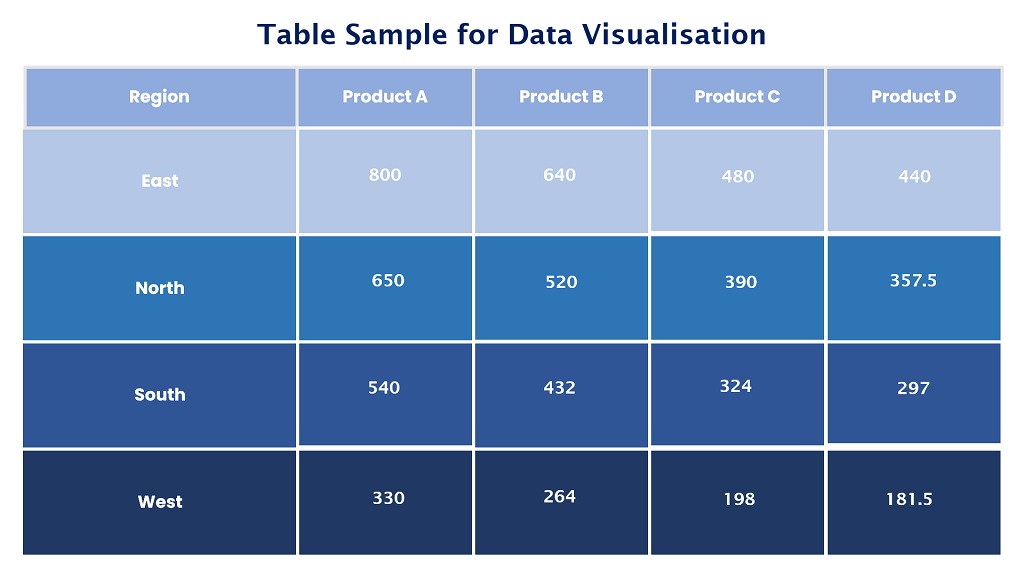
Figure 3
Simple tables are a great tool when you have multiple different units of measure. Arrange your items to start with the most important ones and use light table borders or simply white space to keep the attention on the data.
3. Heatmap
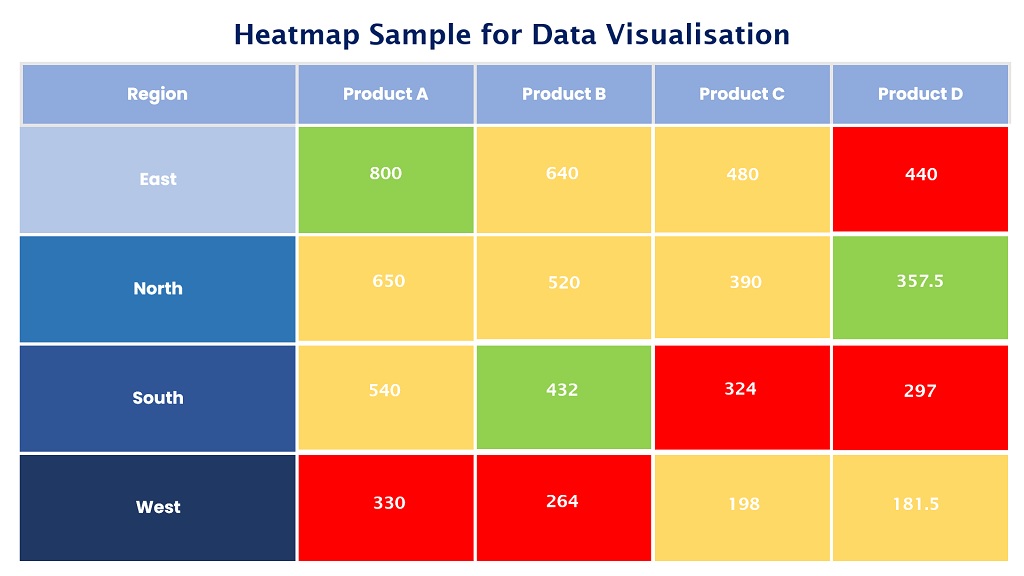
Figure 4
You can use a heatmap when you want to leverage coloured cells to convey the relative magnitude of the illustrated numbers.
4. Line graph
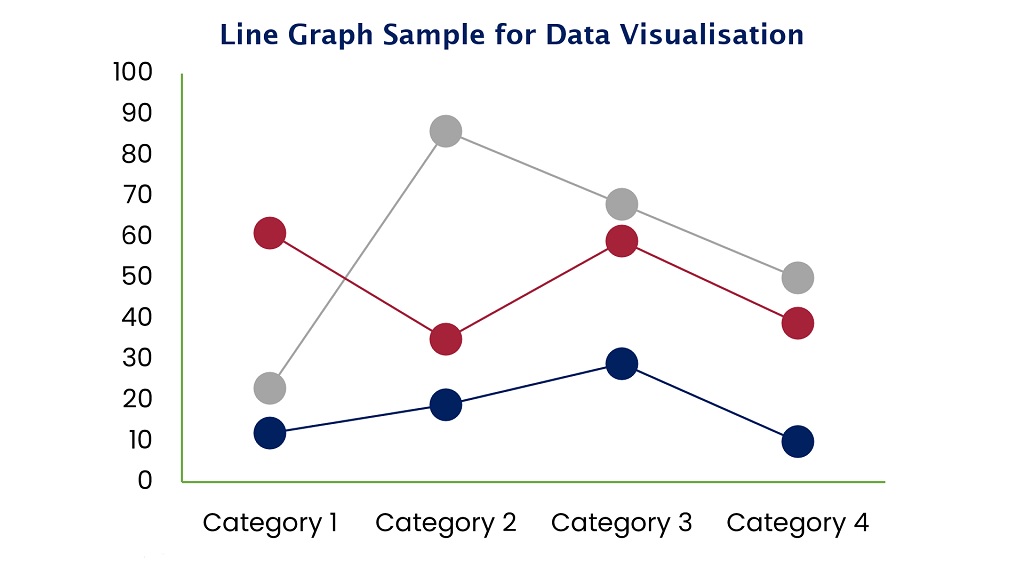
Figure 5
A line graph is a great option when you have to show a single series, two series, or multiple series of data. Avoid comparing more than 5 lines in a chart. Ensure the colour of the focused line is different to the others.
5. Bars

Figure 6
When you need to quickly show which category is the biggest, which is the smallest, and the incremental differences between them, a bar chart is a great option. Use horizontal bar charts when the category names are long.
6. Map
This shows data spatially to help illustrate concepts such as trends across geographic regions or a specific location’s impact on the relevant outcome.
Deliver a Memorable Story
To make the story both sticky and memorable, FP&A should ensure the following:
- Focus on one story and one big idea.
- Speak the language of the audience and avoid technical terminologies.
- Explain the data with context and the story behind it.
- Give the audience a reason to care about the story by starting with an attention-grabbing headline.
- Support your data with evidence and credible resources.
- End your story with a call to action and tell people what you want them to do.
Conclusion
Technology has given us more data and more sophisticated visualisation tools, yet data cannot speak for itself. FP&A has to learn the best practices in data visualisation and master the art of storytelling by understanding how to use the combination of data, visuals and narrative available today. This will enable FP&A professionals to build impactful data stories, influence decision-makers and lead clear change as trusted business advisors.
This article was first published on the Unit4/Prevero blog.
Subscribe to
FP&A Trends Digest

We will regularly update you on the latest trends and developments in FP&A. Take the opportunity to have articles written by finance thought leaders delivered directly to your inbox; watch compelling webinars; connect with like-minded professionals; and become a part of our global community.






